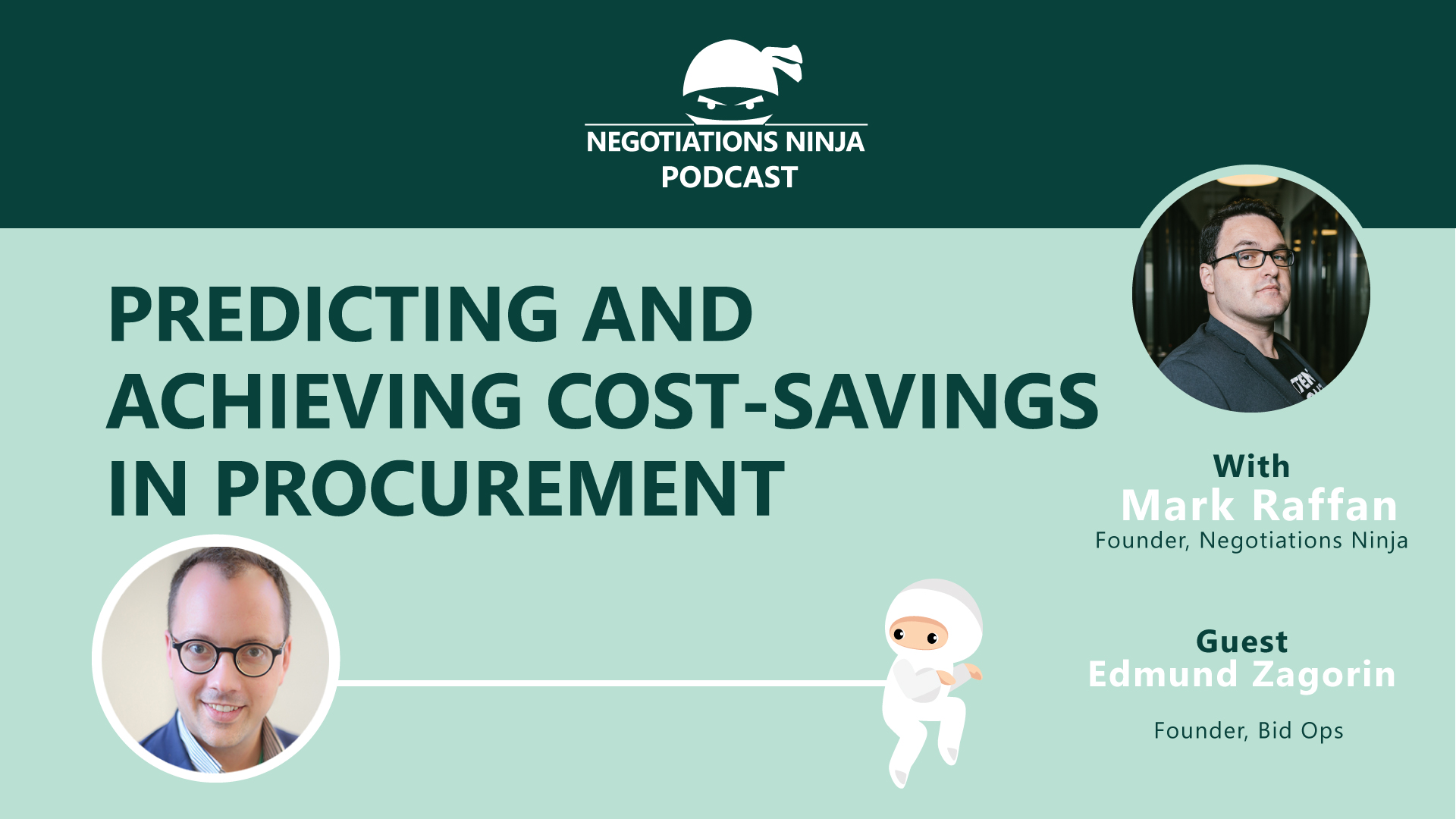What does predictive procurement mean? Can you truly predict pricing? The ability to predict and achieve cost-savings in procurement and supply chain is where there’s often a gap. How do you make an accurate prediction based on data and then achieve it? Edmund Zagorin, the founder of Bid Ops, shares how you can make accurate predictions and achieve the elusive cost savings in this episode of Negotiations Ninja.
Outline of This Episode
- [2:05] Learn more about the history of Bid Ops
- [5:26] Major issues procurement organizations face
- [6:55] How to source talent from within your organization
- [10:57] Opportunities for procurement in 2022
- [13:33] How to build in cost certainty
- [19:18] Predicting and achieving savings in procurement
- [24:06] Achievement of predictions using technology
- [28:51] Learn more about Bid Ops’ conference: Optimal ’22
Predicting and achieving savings in procurement
Edmund points out that you must start by distinguishing what a prediction is: a hypothesis or conditional statement that depends on things being true. What are the important attributes to know about a prediction?
- How many things have to be true for the prediction to be accurate?
- The level of confidence of the person making the prediction
- If something changes, is the prediction invalid?
Then you have to be good at interpreting the prediction. Bid Ops predicts a price and suggests that price to the supplier. If the supplier accepts that price, it validates the prediction. The validation is then fed back into the machine-learning model. As a result, they have millions of individual predictions that have been validated.
Approach the problem(s) like marketing and sales teams
Whether or not you’re using Bid Ops, Edmund emphasizes that great procurement teams should take the same approach as marketing and sales teams. They need to set targets and have those targets be driven by pipelines. There must be an understanding of how much spend is involved in each opportunity, how much competition is available, and the potential outcome for each opportunity.
Then you must build out a hypothesis of where you think you’ll get to from a savings standpoint. If you want to have a higher target, you need to add more projects or spend within the model. After doing all this, you have to ask if it’s realistic to achieve the outcome. If not, you need to influence more spending or be more aggressive with projects.
Achieving predictions using technology
There’s only so much you can do to dramatically improve performance over time without the implementation of good technology that allows you the advantage of predicting cost-savings and carrying out the function of getting the savings. But implementing that technology should improve your efficiency in terms of head-count and make you more predictable to the organization. People will rely on you for the results the business needs to keep going.
If a group of people involved in the process is typing as fast as possible, how long would it take them to finish their work? Is there an alignment between the amount of potential savings with the amount of work that’s required? Procurement organizations often ask for work from suppliers that is not proportionate to the savings. But to get a great outcome, it needs to be worth it for every participant in the process (the supplier, the category manager, the procurement organization, the finance organization, the stakeholder, etc.). The best way to make it worth it is to make it less work and to make it faster.
Most procurement processes are optimal based on rare talent, hard work, or good luck. But you want systems that are optimal by design. You want to rely on what you know to be true: humans love convenience. But they don’t want to have to do everything themselves. The cost of bad data has increased exponentially. Yet self-service procurement systems aren’t going away. That’s why top procurement organizations should invest in the right technology to improve the predictive procurement process.
Resources & People Mentioned
- Optimal 2022: The Leadership Summit for Predictive Procurement
- TealBook
- Salesforce
- Predictable Revenue by Aaron Ross and MaryLou Tyler
Connect with Edmund Zagorin
Connect With Mark
- Follow Negotiations Ninja on Twitter: @NegotiationPod
- Connect with Mark on LinkedIn
- Follow Negotiations Ninja on LinkedIn
- Connect on Instagram: @NegotiationPod
- negotiations.ninja




